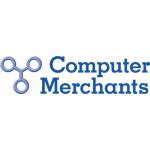We are currently working with a range of clients (vendors and distributors) who have business models that are moving to be more Cloud, annuity or XaaS orientated. In working with these clients, our research findings are suggesting that using “traditional” partner engagement used for “perpetual” products will not give partners the skills necessary to successfully drive and build an annuity revenue stream.
It is highly evident that the skills and activities of vendor partner account managers (PAMs) need to develop and evolve in order to help partners become successful in a cloud or annuity based world. So the question is, what do the PAMs of today need to do in order to be successful themselves and to ensure their partner’s success?
The IT World Has Changed
PAM product knowledge, both sales and technical, is still vitally important in both a perpetual or cloud world. However, in today’s world the end user is less and less interested in the “speeds & feeds”. Instead they are more interested in what the business outcome is that the cloud product or XaaS offering is going to provide.
This change in customer expectations has a corresponding flow through to partner sales skills, presales staff skills and expectations from the key platform vendors. This in turn has a direct effect on how and what the effective PAM is required to do to help the partner effectively identify, position and sell the vendor’s Cloud based platform or solution.
The traditional role of the PAM was essentially to build the relationship, create product and program awareness and compliance with the partners within their territory i.e. enablement. These activities were often around relationship building events, “lunch & learn” product updates, vendor desk duty for program/deal reg/product enquiries, and program compliance around certification, forecasting etc.
IWe would define partner enablement as ensuring the partner has the skills to identify a potential customer, sell the concept, design the correct solution, deploy or implement the technology and of course be able to provide adequate first line support, profitably. The set of skills required to do this is very different for on premise solutions as compared to cloud based solutions.
The key skills that the top PAM’s of today need are as follows:
Annuity Financial Skills and Selling Style
Selling a subscription and/or a managed service at $5,000 per month requires a very different set of skills as compared to selling a lump sum of $100K for a chunk of hardware. Understanding the financial calculations and implications involved in a subscription based sale, for the partner and for their customer, is vitally important. Furthermore it is critical to understand the business impact for the customer in going from CapEx to OpEx based IT spending. PAMs need to make adjustments to the selling or customer engagement style, including the use of different key messages around financial, product, service and partner value add.
Vendors talk about the financial benefits of customers transitioning to the cloud. However the PAM’s business and financial skills training is usually given little if any attention. This must be addressed and PAMs must be educated on these financial models and implications in order to help their partners make this transition successfully.
Customer Lifecycle Management
The perpetual world was often centred on the large one off or anchor sale. In the cloud, XaaS, or annuity world the name of the game is incrementally building the monthly billed revenue over time. Understanding the true long term value of the customer and their incremental up selling or cross selling revenue potential, is just as important as the first sale. This means that the selling, support and account management approach must be changed to one that is more customer lifecycle centric.
The implications of this for the PAM are that their sales skills need to transition to one of continuous partner engagement, rather than being “deal” centric.
Partner Activity Planning
Most large vendors ask their PAMs to do quarterly business reviews with their key partners, often because this is the base of their sales forecasting process. In today’s cloud or annuity driven world the need is for continual activity planning with quarterly checkpoints to measure progress. There is a subtle difference between these two things and this is explained as follows:
Traditional partner reviews were all about the big deals and what was necessary to land them. These large deals were usually crucial to the partner’s status in the partner program they were participating in and the PAM or vendor’s revenue target achievement.
In the annuity world there are still “big” or complex deals needing vendor assistance. The difference is that the partner review process needs be more aligned to managing a range of ongoing activities. This would include new customer acquisition, billing analysis for service maximisation, cross selling, and monthly customer retention activities. So while the new or incremental sales funnel is still important, all of these activities will have an impact on the actual net billed revenue. This looks like:
The PAM needs to help and support the partner plan. The plan now includes more than just new sales opportunities. It includes marketing and other activities that increase Average Revenue Per User (ARPU), a customer retention/recontracting percentage and the minimisation of customer churn.
Measurement
As you can see from above these are not the traditional measures that an IT VAR centric PAM would be measured on. Today’s PAM needs to be more productivity metric focused than ever, rather than absorbed in just the end of month revenue number or number of new deals.
Some of the new measures an annuity based PAM could consider would be:
Conclusion
There is an industry wide shift where traditional VARs are becoming service providers offering more XaaS and cloud based annuity services. Best practice cloud vendors are giving their PAMs the necessary support and skills to help their partners make this transition successfully.


